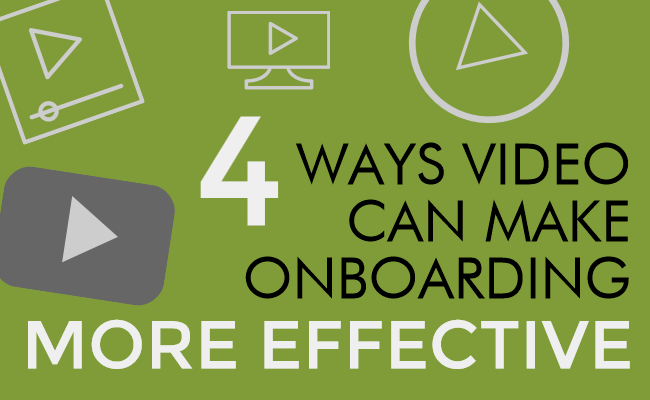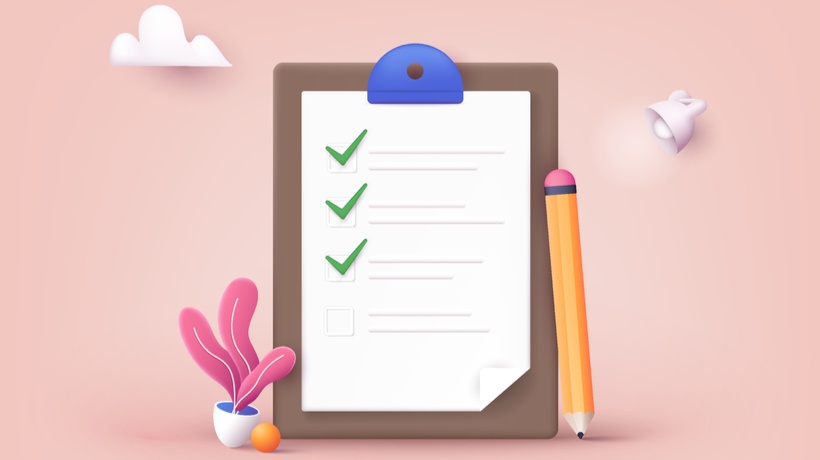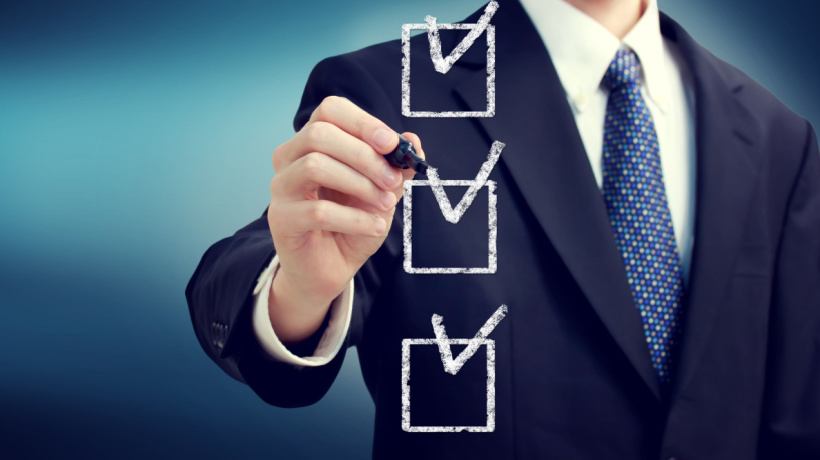IT Onboarding Checklist To Help Your New Hires
The process of training employees on the use of their technological equipment is called IT onboarding. From software to hardware, your new hires need to get familiar with the equipment and tools they are going to be using daily. Whether you're an IT manager looking to fine-tune your onboarding process or a new team member wanting to know what to expect, you'll find lots of helpful tips below to help you get started.
Onboarding in the IT field can be challenging. Technology is constantly changing, and the tools and knowledge needed to use it require continuous learning efforts. A good IT onboarding process can make a new hire familiar with your IT resources, allowing them to quickly become a productive part of your team.
Therefore, streamlining your IT onboarding process is essential to improve productivity and keep employees engaged from day one. In this article, you'll learn about the importance of IT onboarding and the best ways to incorporate it into your L&D process. You will also get a detailed onboarding checklist to guide you through the various stages of the process.
What's Inside This Guide:
- What Is IT Onboarding?
- Why Is IT Onboarding Important?
- The Best Practices For IT Onboarding
- What To Include On Your IT Onboarding Checklist
- How To Create An IT Onboarding Checklist
- The Main Stages/Process Flowchart Of IT Onboarding Checklist
- Create An IT Onboarding Checklist As A Template For Your Process
- IT Onboarding Automation
- How To Make Sure IT Onboarding Goes Smoothly
- Don't Forget Your IT Offboarding Checklist
What Is IT Onboarding?
IT onboarding is the process of training new employees on tasks that they can only do through specific applications, devices, software, and other tools. This process helps them transition into their new roles seamlessly. No one likes starting a new job without access to the company's network, email account, or important documents. IT onboarding takes care of that, ensuring newcomers have everything they need to hit the ground running.
The process starts even before the new employee's first day. The IT team sets up their computer, email, and necessary resources and gives them access to relevant systems and tools based on their role. On the first day, new employees go through an orientation where they learn about security protocols, data management practices, and how to get IT support. This can include training on using the company's intranet, collaboration tools like Slack or Microsoft Teams, and any other software that the company uses.
Why Is IT Onboarding Important?
Studies have shown that most employees agree that the IT onboarding process helped them acclimate from day one. Imagine how frustrating it might be to arrive at your new place of employment with first-day nerves in full swing and not having your equipment ready or trying to figure out how to log into your computer and use software that you've never used before. Having someone guide you through the process of figuring out new equipment and programs makes the experience less overwhelming.
Employees also feel safer, as they have resources on hand to explain all of the security protocols and safety practices, rather than trying to figure everything out themselves. This gives them the opportunity to train on cybersecurity before something happens, as they'll already be aware of common safety threats and risks.
Last but not least, the IT onboarding process makes the new hires feel more comfortable with their new tools, which will help them do their job more efficiently and, ultimately, build self-confidence.
The Best Practices For IT Onboarding
After understanding what IT onboarding is and why it is important, it's time to learn how to implement it. Keep in mind that the process should be carefully planned and structured to cover as much information as possible without causing cognitive overload. All new employees must be able to access this information, even after the onboarding. Here are the best practices of IT onboarding to help every new member of the team find their technical footing.
1. Create And Use An IT Onboarding Checklist
Create a checklist to make the IT onboarding process easier. Your new hires will be satisfied knowing that they have completed all of the essential steps. A thorough checklist motivates, as it creates a sense of accomplishment. Share it with your new hires so that they can track their progress and know where they stand with their IT knowledge.
2. Schedule Meetings For Training
Host a group meeting to train your new employees in using the new equipment. Your fresh hires can ask questions, and your seasoned team members can offer tips based on their experiences. For example, you can schedule meetings to help them set up their new accounts or share specific training on a program they'll need from square one. Make sure you also schedule follow-up meetings to ensure everything has gone smoothly.
3. Inform Them Of Security Policies
Employees often have to handle confidential information about their company. Educate them on security policies concerning their accounts and equipment. For instance, you can advise them on how to use the 2FA that's in place or to install an antivirus program on iOS devices. Create videos that show them step by step what to do if their account is breached. You can also outline specific guidelines and other security policies so that they can access these video-based resources whenever the need arises.
4. Automate The Process
It can be tricky to create multiple accounts and set up multiple devices simultaneously. An easy way to do this is by automating IT onboarding. It prevents human error, which can be expected during manual processing. This is another case in which an online checklist comes in handy, as it will make the process more efficient. Through automation, you can also receive progress notifications, making intervention possible in case a problem arises.
What To Include On Your IT Onboarding Checklist
Collaborative Planning
Work with your HR or hiring team to ensure all required tools and equipment are in place and that the new hire will have everything they need on day one.
Access Provisioning
Do your new hires have access rights and privileges they need to do their jobs effectively?
Hardware Setup
Employees require the right tools for their tasks, whether they work remotely or on-site.
Training Materials
All resources should be relevant and tied to real-world performance.
Security Protocols
You need to keep your organization's data safe while still ensuring user privacy.
Software Installation
Have your recruits downloaded the necessary apps and platforms?
User Accounts
Setting up user accounts ensures that everyone can collaborate and log in to the essential systems.
Network Connectivity
Employees' internet connections must be up to speed.
IT Support Contact
Who should your team members contact for their IT needs?
Feedback Mechanism
Can employees voice their opinions and give honest feedback regarding the onboarding process?
How To Create An IT Onboarding Checklist
You need to determine which tools and equipment are required and which training resources are appropriate for your new employees' roles and current skill gaps. Then, create the necessary accounts and ensure they have access and know how to use the tools or apps effectively. For instance, show them how to use your project management or collaboration software so that they can communicate with colleagues from day one. Some things to include on your IT onboarding checklist are equipment, corporate emails, account credentials, hardware and software setup, and training certifications.
The Main Stages/Process Flowchart Of IT Onboarding Checklist
There are three essential phases of IT onboarding that you should consider when creating your to-do list:
Before Your New Hire's First Day
It's never too early to start prepping your newest team member for success. You can send them any forms they need to complete and a brief overview of what they can expect throughout the onboarding process. For example, who will they be reporting to, and what's the dress code for their first day?
On Your New Hire's First Day
Now, it's officially time to welcome them to your organization and ensure that they grasp their responsibilities and training plan well. You can also verify that they've provided all the necessary documentation and forms.
During The New Employee's First Week Or Month
Plan the first week or month with a mix of training sessions, team intros, and hands-on tasks. Begin with the basics, like an overview of the company's IT setup, essential policies, and security protocols. Gradually shift to more specialized training, tailored to their specific role, of course. This could mean mastering a particular software or gaining a deep understanding of your company's coding standards, for instance.
Create An IT Onboarding Checklist As A Template For Your Process
A comprehensive IT onboarding checklist serves as a template that can be customized for each new employee, ensuring that nothing is overlooked and that all essential tasks are completed on time. A well-organized checklist helps to structure the process so your new team member feels confident and ready to take on their role. The checklist will also keep your IT department and HR team aligned, making sure that all necessary preparations are made ahead of the new hire's start date.
Coordinate With The Hiring Manager To See What Software/Devices The New Hire Will Need
Work closely with the hiring manager to understand the specific software, tools, and devices that the new hire will require for their role. Some roles may require specialized applications or access to particular databases, while others may need specific hardware like dual monitors or extra storage. The hiring manager will provide key insights into what is necessary for the employee's productivity to ensure that all needs are addressed in advance.
For instance, a graphic designer will need design software, while a data analyst will need access to analytics tools. By aligning with the hiring manager on these specifics, you can avoid any last-minute scrambling or confusion on the new hire's first day.
Set Up User Accounts And Software Licenses
Set the user accounts and software licenses (if required) for your new hires. This process includes creating login credentials for the company's internal systems, email accounts, and any third-party tools the employee will be using, such as project management or communication platforms.
Make sure that each user account is linked to the correct permissions, ensuring the new hire has access to everything necessary for their role without compromising security. Verify that the licenses for the software are current and correctly assigned to avoid delays or interruptions in the onboarding process. Setting these up ahead of time ensures a smooth start for your new team member.
Order Equipment
Ordering the necessary equipment should be done as soon as possible, ideally before the new hire's start date. This includes laptops, desktops, monitors, docking stations, headsets, and any other hardware required for their role. If the new hire is working remotely, shipping the equipment ahead of time ensures they are ready to go on day one.
In addition to basic hardware, consider any specialized equipment they might need. For example, if they will be working in a development role, they may require a more powerful machine with certain specifications. Ensure that everything is properly set up and tested before handing it over, so there are no tech issues on the first day.
Schedule Meetings To Assist In The Setup Of New Accounts
A scheduled session with IT staff can help walk them through the steps needed to log in to their accounts, install essential software, and access company systems. These meetings provide a structured opportunity for them to ask questions and address any issues they encounter.
It's also beneficial to schedule follow-up meetings in case the new hire runs into challenges after the initial setup. This will help them feel supported and ensure they are comfortable with the tools they'll be using in their role. It also allows IT to address any problems before they become significant roadblocks.
Provide Any In-Company Training Documents Or Manuals For Software And Programs
Provide your new hires with in-company training documents or manuals for the software and tools they'll be using. These office equipment productivity tips and resources should include step-by-step guides, video tutorials, or FAQ on using internal systems and key programs. Having easy access to this documentation helps new employees feel confident in troubleshooting on their own and learning at their own pace.
These materials should be organized and easy to navigate, with clear instructions for both basic tasks and more advanced functions. Ensure they are updated regularly to reflect any changes in the company's systems or processes.
Instruct New Hires On Security Guidelines And IT Compliance
Make sure new hires are educated on the company's security protocols and IT compliance policies. This may include instructions on setting up two-factor authentication (2FA), password management, handling confidential information, and recognizing phishing attempts.
Provide them with training on your organization's data protection policies and discuss how they can help safeguard sensitive information. This training will not only protect your company but also help the new hire feel secure in their role, knowing that they understand how to keep both their data and the company's data safe.
Check In At The End Of The First Week To Make Sure They Understand How To Use The Relevant Software
After the first few days, it's important to check in with the new hire to make sure they're comfortable using the tools and software necessary for their role. A follow-up meeting at the end of their first week gives you the chance to assess their progress and offer assistance if they've encountered any difficulties.
Ask if they feel confident using the software and if there are any areas in which they need additional training. This check-in also provides a valuable opportunity to gather feedback on the onboarding process itself, helping you identify areas for improvement in future onboarding cycles.
IT Onboarding Automation
Instead of manually setting up accounts, software, and devices, automation takes care of the basics, freeing up your IT staff for more critical tasks. This way, everyone wins because there is consistency. New hires get the same setup with no forgotten passwords or missing apps. Automation handles the small stuff, like sending welcome emails with login details or scheduling training sessions. It can even remind IT when a step is complete or needs attention, so you're never left in the dark.
No more scrambling to get everything ready. New hires can dive straight into their work without waiting. Plus, you can track progress in real time and see where things stand at any given moment. If something isn't working as expected, you'll know right away and can step in to fix it.
IT onboarding automation speeds things up and reduces the risk of hiccups, making for a better overall experience. So, let the machines do the heavy lifting and give your IT team more time to focus on what really matters.
How To Make Sure IT Onboarding Goes Smoothly
Even with all this preparation, you must remain ready in case of hiccups. The following tips can help ensure that the process goes smoothly.
Inform Your IT Department
Give the IT department the necessary information regarding your new employees and their roles. Ideally, they should have all the details in order to know what to set up and what equipment to prepare beforehand. They will also need to set up new accounts or resolve any issues with outdated software in advance to help expedite the process. Finally, be sure that you have all of their information added to your Learning Management System so that new employees can log in and access resources straight away.
Be Prepared
Don't wait until their very first day to buy their equipment or any other materials they may need. Recruits should be able to dive right into their IT onboarding, versus losing time in getting everything prepared. If they're working remotely, you'll also need to ensure that the necessary tools arrive in time so that there aren't unexpected delays.
Be Available
You should keep an open line of communication even after the IT onboarding is over. People may encounter all kinds of issues with their equipment, so it's comforting to know that they have that technical safety net. Also, check up on them after they are done with the process. This is a way for you to gather feedback and let them know that they can reach out to you if they ever encounter difficulties.
Don't Forget Your IT Offboarding Checklist
When an employee leaves, it's just as important to handle their IT offboarding with care. A precise checklist ensures you cover every step and prevent any potential security risks. Here's what you need to do.
Cancel All Accounts, Logins, Etc.
First, deactivate their accounts. This includes email, software subscriptions, and access to company systems. Make sure to revoke any permissions they might have had on internal platforms or third-party tools. This is crucial for keeping your company's data safe and preventing unauthorized access after they've left. It's also a good idea to change shared passwords for company resources, especially if they have access to sensitive or critical systems. You don't want anyone still having access they shouldn't have.
Recover All Devices
Gather all company-owned devices—laptops, phones, tablets, and even peripherals like keyboards and monitors. If the employee worked remotely, arrange for the return of any equipment shipped to them. It's important to make sure all devices are returned in good condition and wiped of any company data. Recovering and adequately cleaning these devices protects both the employee's privacy and your company's information. It also allows you to repurpose the equipment for the next hire, keeping everything ready for rotation.
Following this offboarding checklist, you tie up all loose ends and avoid potential security risks once the employee is gone. It's all about protecting your organization and maintaining a clean, efficient process.
Conclusion
The IT onboarding process helps your newest team members get comfortable with their equipment and the programs they are going to be using to get their job done. It also makes them feel safer and more confident since they can gain a better understanding of the safety protocols in place and learn how to handle common challenges they may encounter along the way. Some of the best practices include creating an IT onboarding checklist to track their progress, scheduling meetings to follow up and identify areas for improvement, and automating the process to make it easier.
Visit our online directory to find the best employee onboarding software for your organization. You can filter by features, pricing model, deployment, and licensing type to simplify your search.
FAQ
IT onboarding is the process of introducing new hires to the company's technology, systems, and tools, ensuring they have access to and know how to use everything they need to do their job.
Onboarding typically includes tasks like setting up accounts, installing software, training employees on tools and security protocols, and introducing them to the team and company culture.
The typical onboarding process includes stages before the new hire's first day, during their first day, and in the following weeks of their employment as they become more familiar with their role and the tools they'll use.








